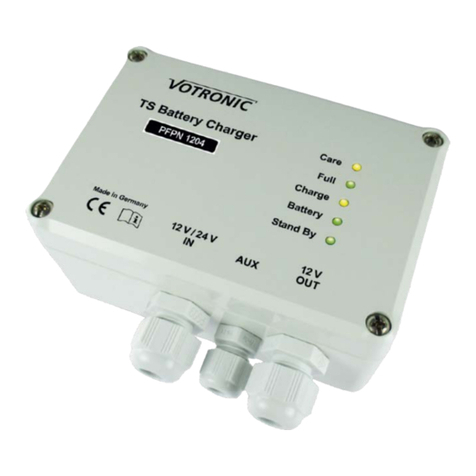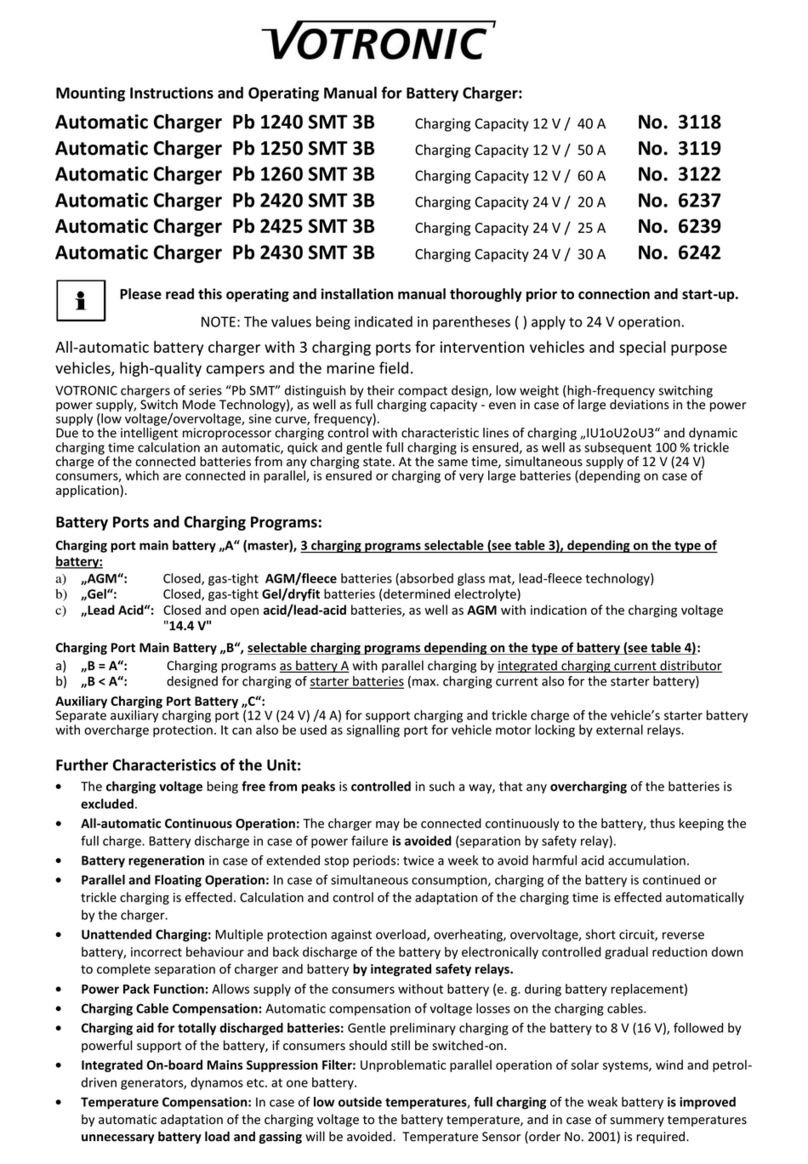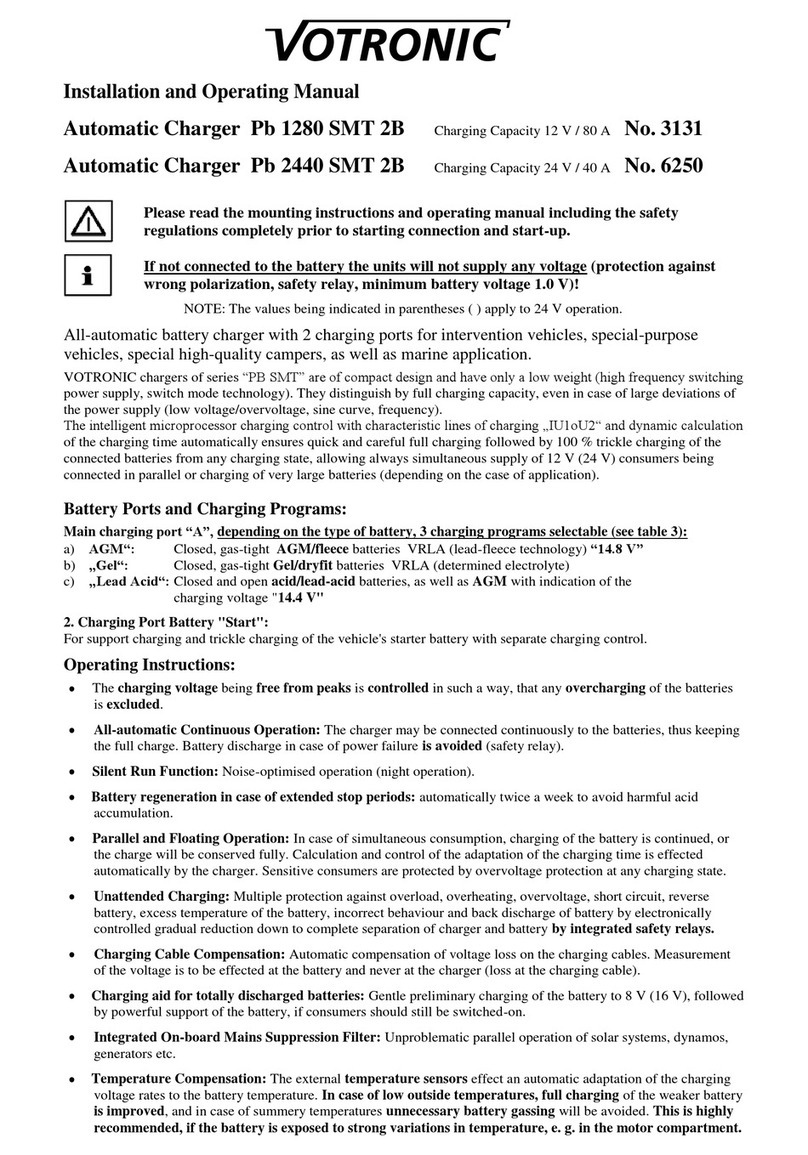
Installation and Operating Manual
Charing Converter, B2B Battery to Battery, Optimal Battery Charging During Driving:
VCC 1212 - 45 Input Voltage 12 V Charging Capacity 12 V / 45 A No. 3323
VCC 1212 - 60 Input Voltage 12 V Charging Capacity 12 V / 60 A No. 3325
VCC 1212 - 75 Input Voltage 12 V Charging Capacity 12 V / 75 A No. 3327
VCC 1212 - 90 Input Voltage 12 V Charging Capacity 12 V / 90 A No. 3329
Please read this operating and installation manual thoroughly prior to connection and start-up.
Fully automatic Battery Charging Converter for special purpose vehicles, high-quality campers, boats.
The charging converters (boosters) of series "VCC" have been developed according to the latest regulations for supply
battery (board battery) charging; mobile from the generator (starter battery) during driving.
In contrast to conventional cutoff relays, the charging voltage will be raised or lowered according to the default values of
the charging program. Thus, they are particularly suitable for vehicles according to the EURO Standard 6, 6 +.
Eight selectable charging programs for conventional board batteries in lead- acid, lead-gel, lead-AGM or advanced lithium
LiFePO4 technology ensure unattended, quick and gentle full charging from any charging state with subsequent trickle
charging and maintenance of the battery.
Even at short distances, the battery will be charged with full charging current. The simultaneous supply of the connected
12 V consumer loads is effected automatically, even in case of strongly loaded board mains. The automatic power control
gives the required safety and ensures the vehicle's starting ability.
•The efficient charging converter ensures high charging capacity, already within short distances.
•Full charging when driving longer distances
•It increases/reduces the voltage to the level, which is required for precise charging of the board battery with the
optimum charging characteristic line.
•Cable losses and considerable voltage fluctuations of the generator, known from Euro 6 vehicles (intelligent
alternators), are completely compensated.
•The charging converters excel by their compact design, low weight (high-frequency switch mode technology) and
powerfully dimensioned power components for safe operation.
•The energy balance of the board battery is considerably improved, without intervention into the starter circuit.
•The simultaneously supplied 12 V consumer loads are protected against overvoltage and voltage fluctuations.
Further Characteristics of the Unit:
•The charging voltage is free from peaks and is controlled in such a way, that overcharging of the batteries is
excluded.
•Fully Automatic Operation: The unit is permanently connected to the batteries, and it is automatically activated by
the running generator of the vehicle. Battery discharge in case of an engine stop is avoided.
•Parallel and Floating Operation: In case of simultaneous consumption, the battery will either continue to be charged
or maintained via trickle charging. Calculation and control of the adaptation of the charging times is effected
automatically by the unit.
•Unattended Charging: Multiple protection against overload, overheating, overvoltage, short circuit, incorrect
behaviour and back discharge of the battery by electronically controlled gradual reduction down to complete
separation of unit and battery.
•Integrated On-board Mains Suppression Filter: Unproblematic parallel operation of charging sources (EBL, chargers,
motor-driven and petrol-driven generators, solar systems) on one battery.
•Charging Cable Compensation: Automatic compensation of voltage losses on the charging cables.
•Connection for Battery Temperature Sensor (included in the standard delivery scope):
Lead batteries (acid, gel, AGM): In case of low outside temperatures, full charging of the weak battery is improved by
automatic adaptation of the charging voltage to the battery temperature, and in case of summery temperatures
unnecessary battery gassing will be avoided.
LiFePO4 Batteries: Battery protection in case of high temperatures and particularly in case of low temperatures < 0° C.
Highly recommended, if the battery temperature might drop below 0 °C during operation.
•Charging Aid for Deeply Discharged Lead Batteries: Gentle preliminary charging of the (lead-acid, gel, AGM) battery
to 8 V, followed by powerful support of the battery, in case of possibly switched-on consumers.



































